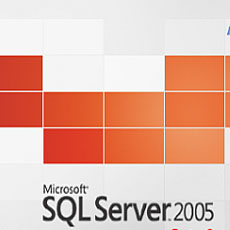-
-
products
-
resources
-
support
-
company
-
Login
-
.dsv File Extension
Developer: Microsoft CorporationFile type: Data Source View FileYou're here because you have a file that has a file extension ending in .dsv. Files with the file extension .dsv can only be launched by certain applications. It's possible that .dsv files are data files rather than documents or media, which means they're not meant to be viewed at all.what is a .dsv file?
The DSV file extension is used in a file also known as Data Source View file, this type of file is commonly associated with Microsoft SQL server, Microsoft software which is used to store database (database management system). One of the Microsoft SQL server’s primary functions is to save and retrieve data as requested by the software application; it could be used on the same computer or those computers that are connected on a network. The Data Source View file (DSV) is a new concept that was introduced in the Microsoft SQL server 2005. DSV files are built on a data source and so in order for you to use a data source view in a package, you need to add the data source first in the package. File types such as DSV and the like dictates how a data source is viewed in the Microsoft SQL server, it gives a specific selection of database object that describes sources and destination for Microsoft SQL server 2005, Microsoft SQL server 2008 and Microsoft SQL server 2008 S2.how to open a .dsv file?
Launch a .dsv file, or any other file on your PC, by double-clicking it. If your file associations are set up correctly, the application that's meant to open your .dsv file will open it. It's possible you may need to download or purchase the correct application. It's also possible that you have the correct application on your PC, but .dsv files aren't yet associated with it. In this case, when you try to open a .dsv file, you can tell Windows which application is the correct one for that file. From then on, opening a .dsv file will open the correct application. Click here to fix .dsv file association errorsapplications that open a .dsv file
 Microsoft SQL Server (2008)
Microsoft SQL Server (2008)Microsoft SQL Server (2008)
SQL Server 2008, formerly codenamed Katmai, was released on August 6, 2008 and goals to make data self organizing, management self-tuning, and self maintaining with the improvement of SQL Server Always On technologies, to give almost-zero downtime. SQL Server 2008 also includes support for structured and semi-structured data, as well as digital media formats for pictures, audio, video and other multimedia data. In present versions, such multimedia data can be saved as BLOBs (binary large objects), but they are generic bit streams. It also natively supports hierarchical data, and includes T-SQL constructs to directly deal with them, without using recursive queries. Basic awareness of multimedia data will permit specialized functions to be performed on them. According to Paul Flessner, senior Vice President, Server Applications, Microsoft Corp., SQL Server 2008 can be a data storage backend for different varieties of data: XML, email, time/calendar, file, document, spatial, etc as well as perform search, query, analysis, sharing, and synchronization across all data types. Microsoft SQL Server (2005)
Microsoft SQL Server (2005)Microsoft SQL Server (2005)
SQL Server 2005, formerly codenamed Yukon, was released in October 2005. It’s a built-in native support for managing XML data and adding relational data. Purposely, it defined an XML data type that could be utilized either as literals in queries a data type or in database columns. XML columns can be linked with XSD schemas; XML data being saved is verified against the schema. XML is changed to an internal binary data type before being saved in the database. Specialized indexing methods were made available for XML data. XML data is inquired using XQuery; SQL Server 2005 added some extensions to the T-SQL language to permit embedding XQuery queries in T-SQL. In addition, it also defines a new extension to XQuery, called XML DML that allows query-based modifications to XML data. SQL Server 2005 also allows a database server to be exposed over Web services using Tabular Data Stream (TDS) packets encapsulated within SOAP (protocol) requests. When the data is viewed over Web services, results are returned as XML.a word of warning
Be careful not to rename the extension on .dsv files, or any other files. This will not change the file type. Only special conversion software can change a file from one file type to another.what is a file extension?
A file extension is the set of three or four characters at the end of a filename; in this case, .dsv. File extensions tell you what type of file it is, and tell Windows what programs can open it. Windows often associates a default program to each file extension, so that when you double-click the file, the program launches automatically. When that program is no longer on your PC, you can sometimes get an error when you try to open the associated file.leave a comment

